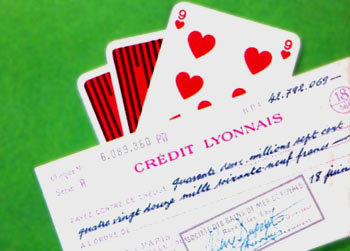
Signal vs Noise talks about the casino experience – a world awash with designed-in architectures of control, both physical and psychological (and physiological, perhaps), truly environments designed specifically to manipulate and reinforce certain behaviour, from maze-like layouts (intentional route obfuscation – perhaps even more so than in supermarkets) to the deliberate funnelling of winners past many other places to spend their chips on the way to the cashier’s window.
While the commenters (including ‘Hunter’ who runs a blog on casino design) attempt to clarify/debunk some of the more legendary ‘casino tricks’ including restricting daylight and pumping extra oxygen onto the floor, it’s clear that an enormous wealth of expertise has developed over the years to maximise the control of players and thus maximise casinos’ takings.
A couple of months ago, Scott Craver mentioned another interesting casino trick:
“This casino had a cell-phone blocker, and of course our conference room would have no wi-fi. Apparently the goal is to attract people to machines and disconnect them from everything else in the world. From the gambling areas you cannot tell if it is day or night. And the way everything was designed to suck people in had all the subtlety of a mousetrap.”
(Despite spending most of my formative years reading the James Bond books over and over again, and being fascinated by Thomas Bass’s The Newtonian Casino, I’ve only ever actually been in one ‘proper’ casino, in London, and I spent most of that time watching a friend play blackjack and trying to apply what I could remember from Bringing Down The House, so I’m not really very familiar with the subject. But it’s extremely interesting, and worthy of more research – and comparison with other ‘public’ environments.)
*Yeah, it’s a calculated pun!
Pingback: Learned down the gambling house at fulminate // Architectures of Control
Pingback: My New Swedish Friends: Context, Mystery, and Discontinuities in The IKEA Product Naming System, Part 2 — Joe Lamantia.com